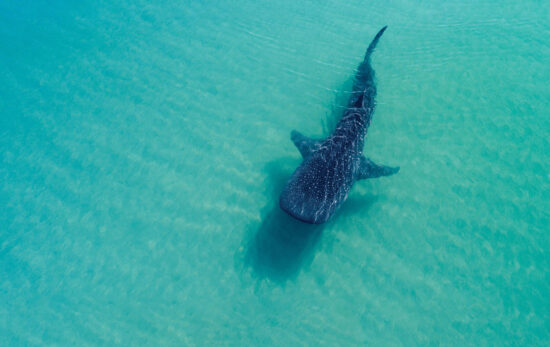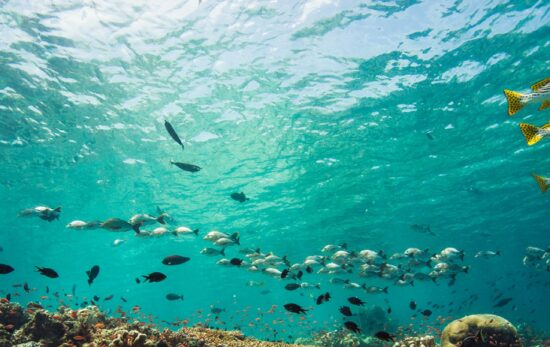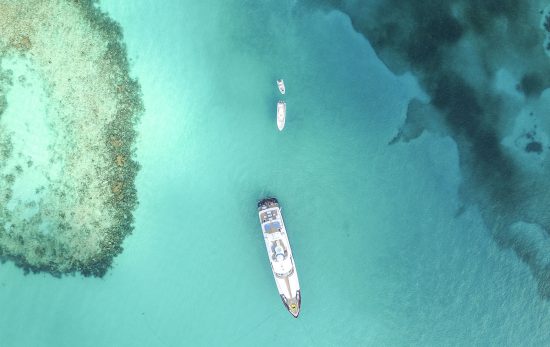The next time you choose to travel, why not commit to booking that epic bucket list adventure and supporting local conservation at the same time? You can even offset your carbon usage from flights thanks to PADI’s travel program.
PADI has partnered with The Ocean Foundation to support The SeaGrass Grow Program, empowering you to mitigate the carbon from your next holiday. You can donate to the program every time you book a trip with PADI Travel, or simply make a donation seagrass offset your carbon usage.
These beautiful spots, where tourism spending benefits local conservation, will give you hope for our blue planet. So, by traveling to these local destinations, you are supporting their conservation efforts.
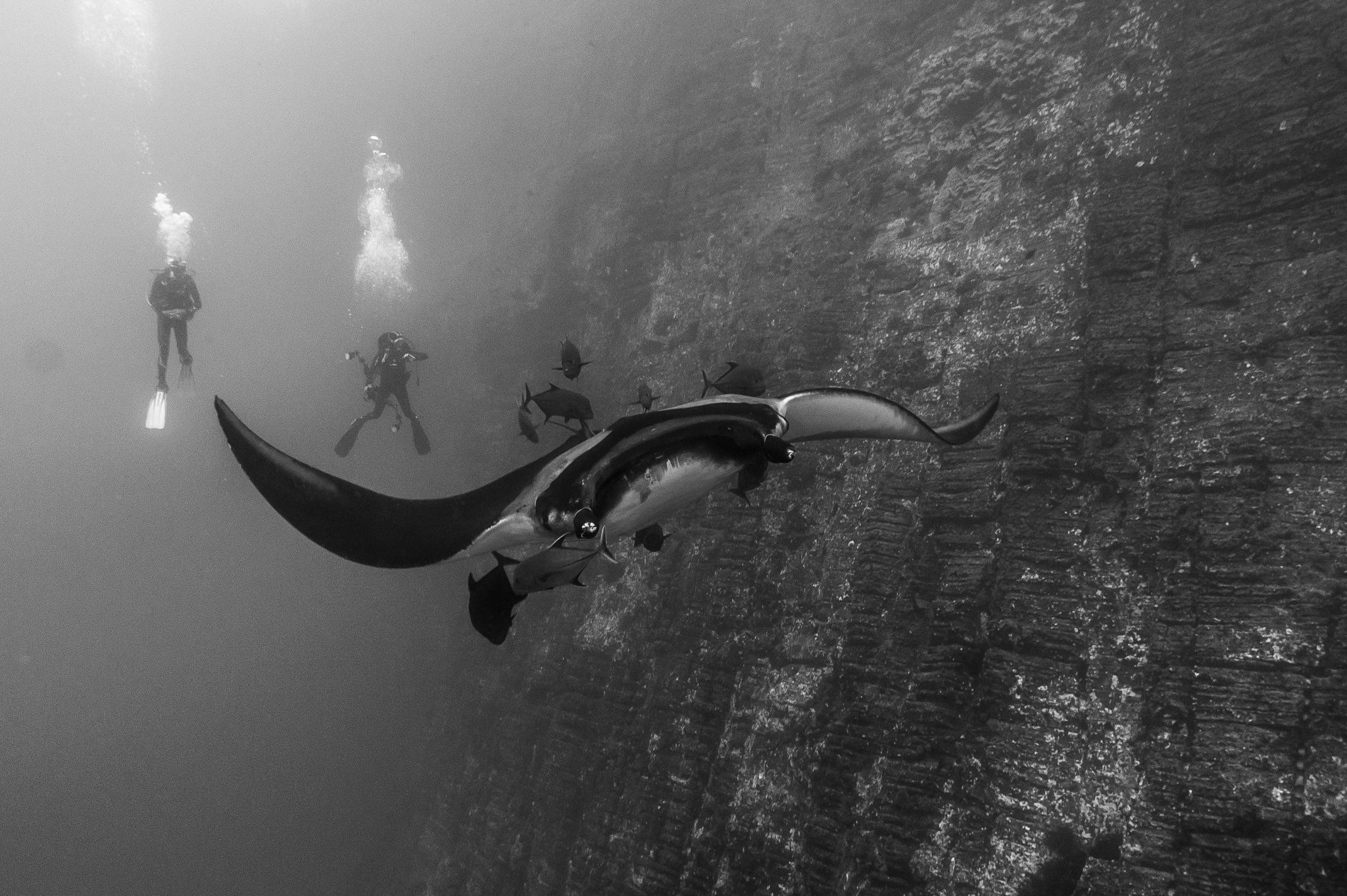
1. Revillagigedo Islands, Mexico
If you dream of magical manta encounters and being surrounded by schools of hammerheads while being buzzed by an orca, then the Revillagigedo Islands are perfect for you. Affectionately known as the Galapagos of Mexico, it is a diver’s paradise – and a UNESCO World Heritage site. Drop-in on Roca Partida and often you’ll have to choose between swimming with a school of giant tuna, being surrounded by Galapagos and Silky sharks, or meeting a whale shark. You can literally choose your own adventure.
Sail to the most well-known of the island chain, Socorro, on a liveaboard this spring for a chance to witness the pelagic lover’s paradise. As the seasons transition from winter to spring, lucky explorers get the chance to have intimate encounters with manta rays, bottlenose dolphins who seek out divers for some playful interactions and games they’ve created entirely unique to the pod, and even the occasional humpback whale off the coast of Mexico. Getting to the remote Socorro Island is easier than you may think. Simply hop on a direct flight to Cabo, Mexico and then board your PADI Liveaboard.
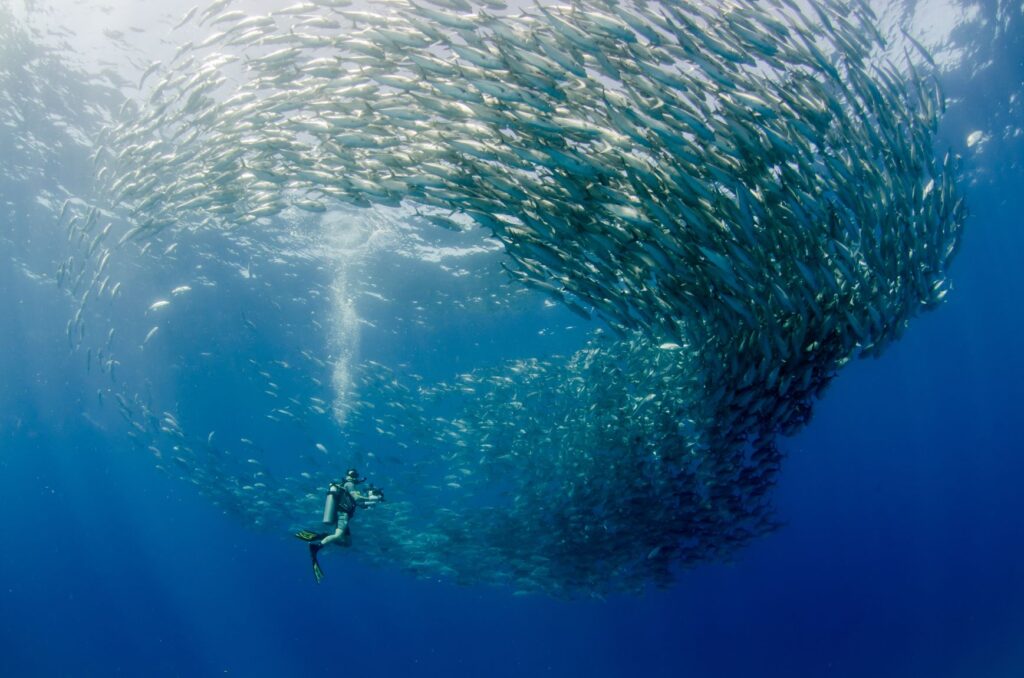
Making a Positive Impact
Scientists have discovered through tagging – many of the same animals found in these waters migrate between Galapagos and Coco Island as well – moving from seamount to seamount. This in part helped drive protection for the threatened pelagic species. In 2017, 148,087 square kilometres (57,177 square miles) was declared a marine park – Mexico’s largest fully protected marine reserve, free from fishing and other extractive activities. Diving fees are a considerable source of income for the protection of the park.
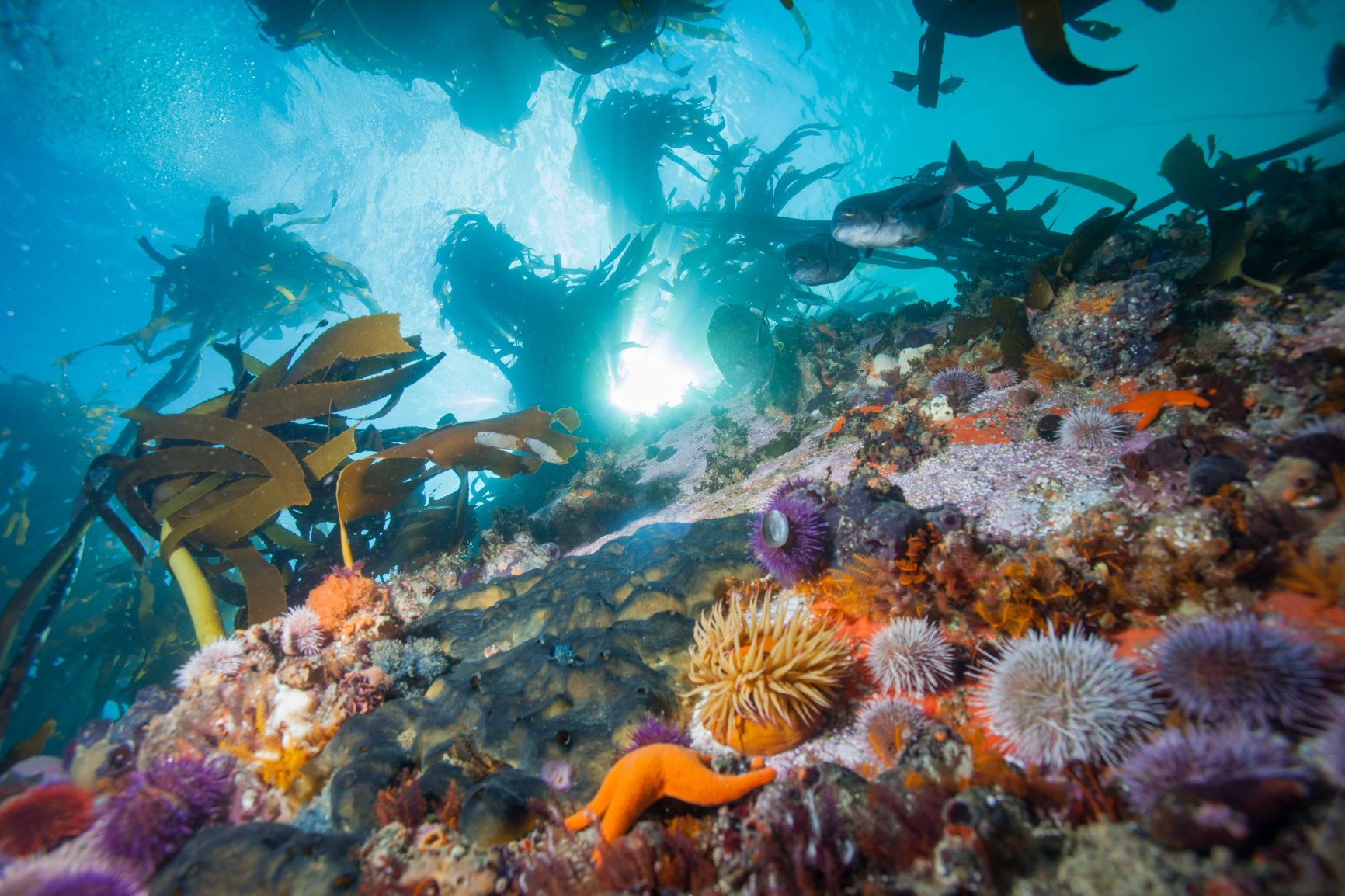
2. South Africa
If you are looking for the ultimate land and sea safari, then South Africa is the perfect location for you. Consider summer – for great weather as well as sea conditions in both Cape Town and Durban.
Head south to Cape Town to snorkel – or dive – with the playful fur seals of Hout Bay hiding amid the kelp or head out on a cage diving expedition to meet their arch enemy… the Great White Shark. From sunrise breaches, to sunset spy hops, you’ll never forget your encounter with the “white pointers” in the shark capital of the world. And while the Great Whites get all the attention, you’ll be absolutely enthralled with the over 100 other species – many of which can only be found in South African waters. We especially love the antics of the Pajama Shy Sharks in the gorgeous bull kelp forests.
The south coast of Durban offers incredible diving that is a tad bit more tropical (by about at least 25 degrees!) than the cold waters of Cape Town. Visit Aliwal Shoal to swim with their resident Tiger, Bull, Oceanic Black Tip and Dusky sharks in some of the most epic shark diving in the world. Not a diver? No problem! You can snorkel with these sharks as well. The Shoal offers amazing diving and a cast of characters from friendly leatherback turtles to massive brindle bass. Further north is Sodwana, a largely untouched divers paradise where beach launches (and landings!) are as exciting as the residents. Pods of dolphins, whale sharks, large schools of fish, manta rays and even the occasional white shark can be found on the many dive sites in the area. Both are marine reserves (part of South Africa’s 42 reserves) ensuring you are supporting the local protection of these amazing spots.
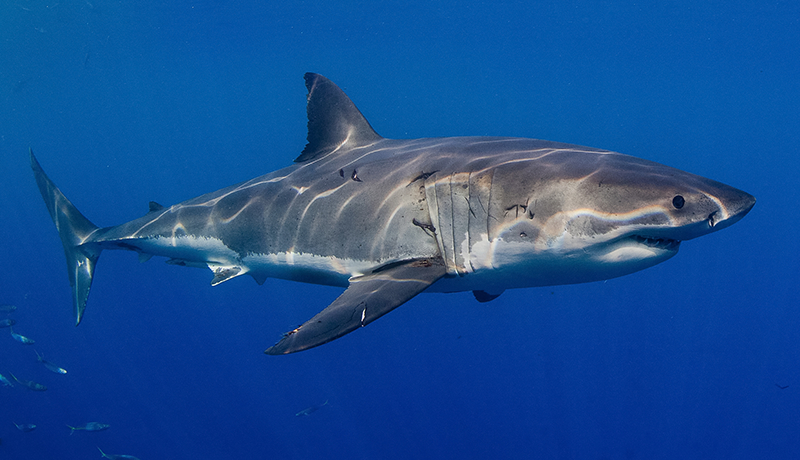
Making a Positive Impact
South Africa was the first country to protect Great White Sharks – and cage diving contributes more than 74 million rand to the economy – truly making sharks more valuable alive, than dead. Terrestrially, though not as well-known as Kruger, KwaZulu Natal offers some fantastic safari adventures – and can easily be part of a trip to Aliwal Shoal or Sodwana. We particularly love Manyoni Private Game Reserve also known as Zululand’s Rhino Reserve – and is a leader in rhino species conservation. Not only do you have the chance to encounter black and white rhino, you can also participate in – and support – rhino conservation. Your South Africa spring diving experience can be booked with 36 PADI Dive Centers.
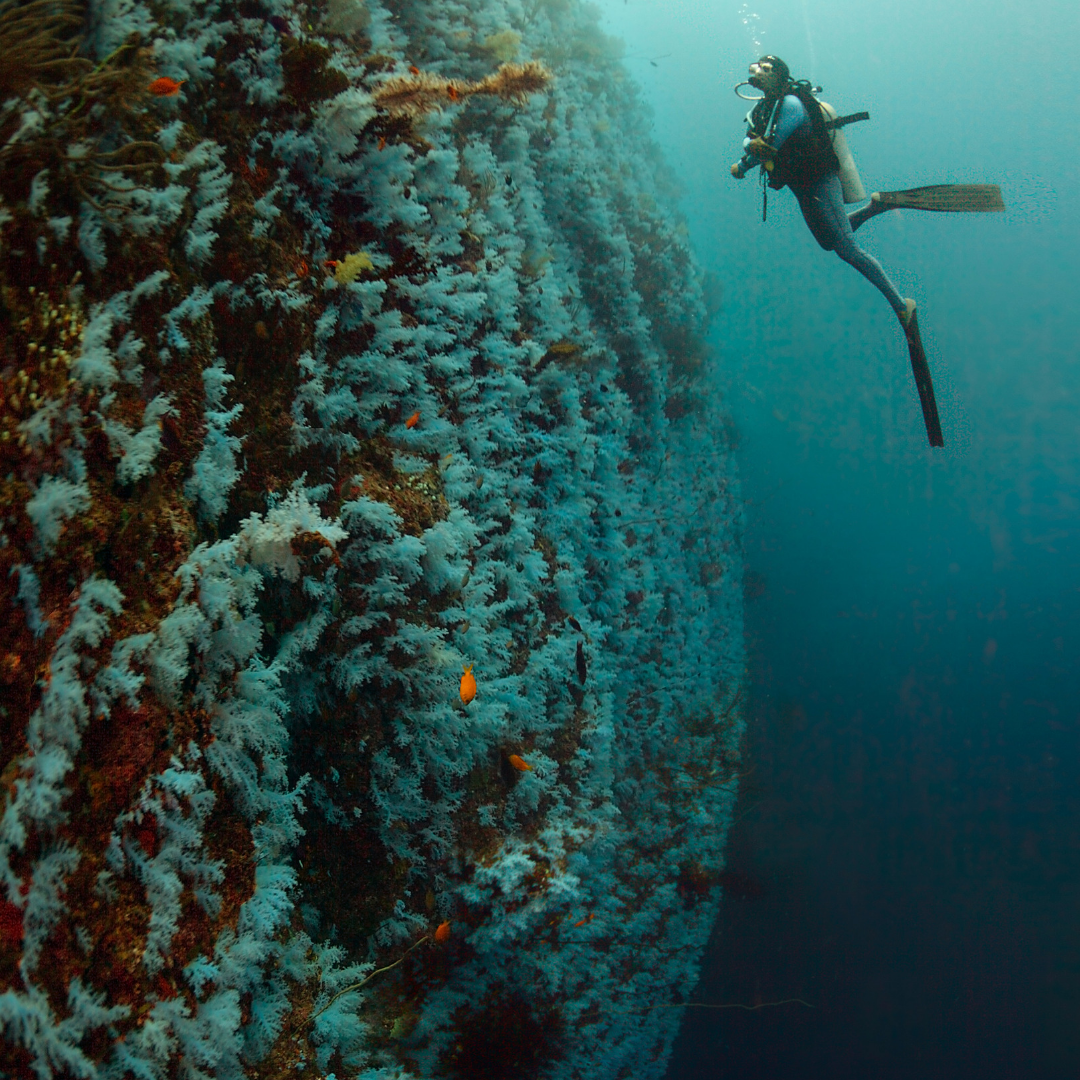
3. Fiji
Those looking for great visibility and exciting marine animal action should head to the warmer waters of Fiji any time of the year!
Of the 333 islands to choose from, Beqa Lagoon off the coast of Vitu Levu in Fiji offers a shark haven where in just one dive you can see bull sharks, whitetip reef sharks, blacktip reef sharks, nurse sharks and even tiger sharks! And making this event even more magical is that the massive shark gatherings will take place amongst the vibrant hues of healthy coral.
Fiji is known for its massive amount of marine species as well as being the “soft coral” capital of the world. From pristine reefs first explored by Jacques Cousteau to areas still remaining to be discovered, you’ll be delighted by the incredible colors of the swaying coral and visits from blue ribbon eels, manta rays, school of bumphead parrotfish and even pilot whales.
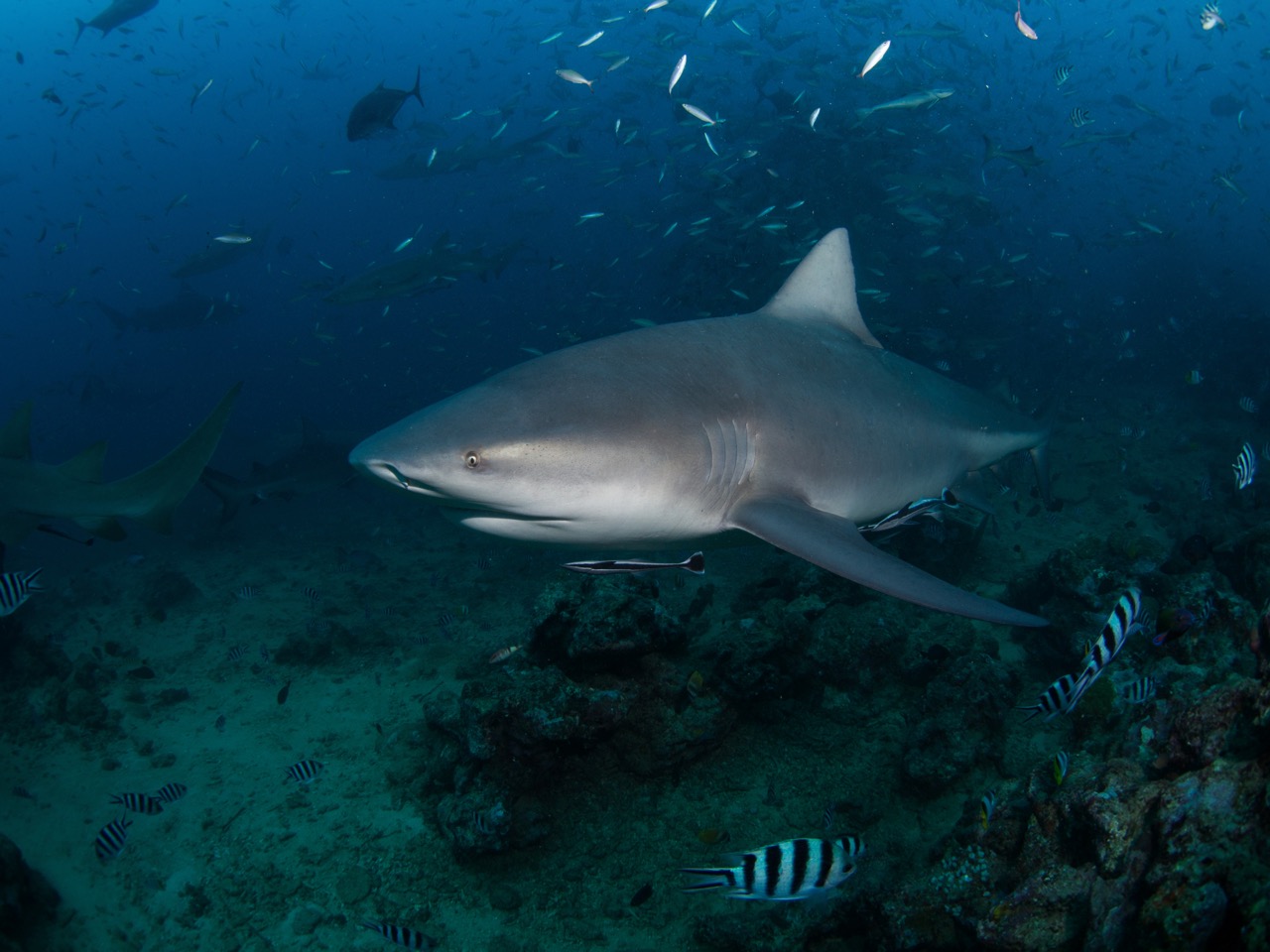
Making a Positive Impact
Fiji is once again open to international travelers and offers the chance to witness one of the world’s prime examples of the soft-coral ecosystem, known as Rainbow Reef. But it is not just colourful reefs that make Fiji such a special place to explore this spring. A recent study in Fiji found that bull sharks form friendships with each other! Researchers studied data collected over 3,000 shark dives in Fiji’s Shark Reef Marine Reserve (SRMR), one of the world’s most sought-after diving destinations. SRMR is located in the Beqa Channel, off the southern coast of Viti Levu, and is a striking example of collaboration for conservation.
The shark is revered by local Fijians and legend has it that Dakuwaqa, the ancient shark god, provides protection for the people when at sea. So not only will you be exploring Fiji’s underwater world with your dive buddy, but you will likely encounter a pair of bull shark BFFs on your dive too!
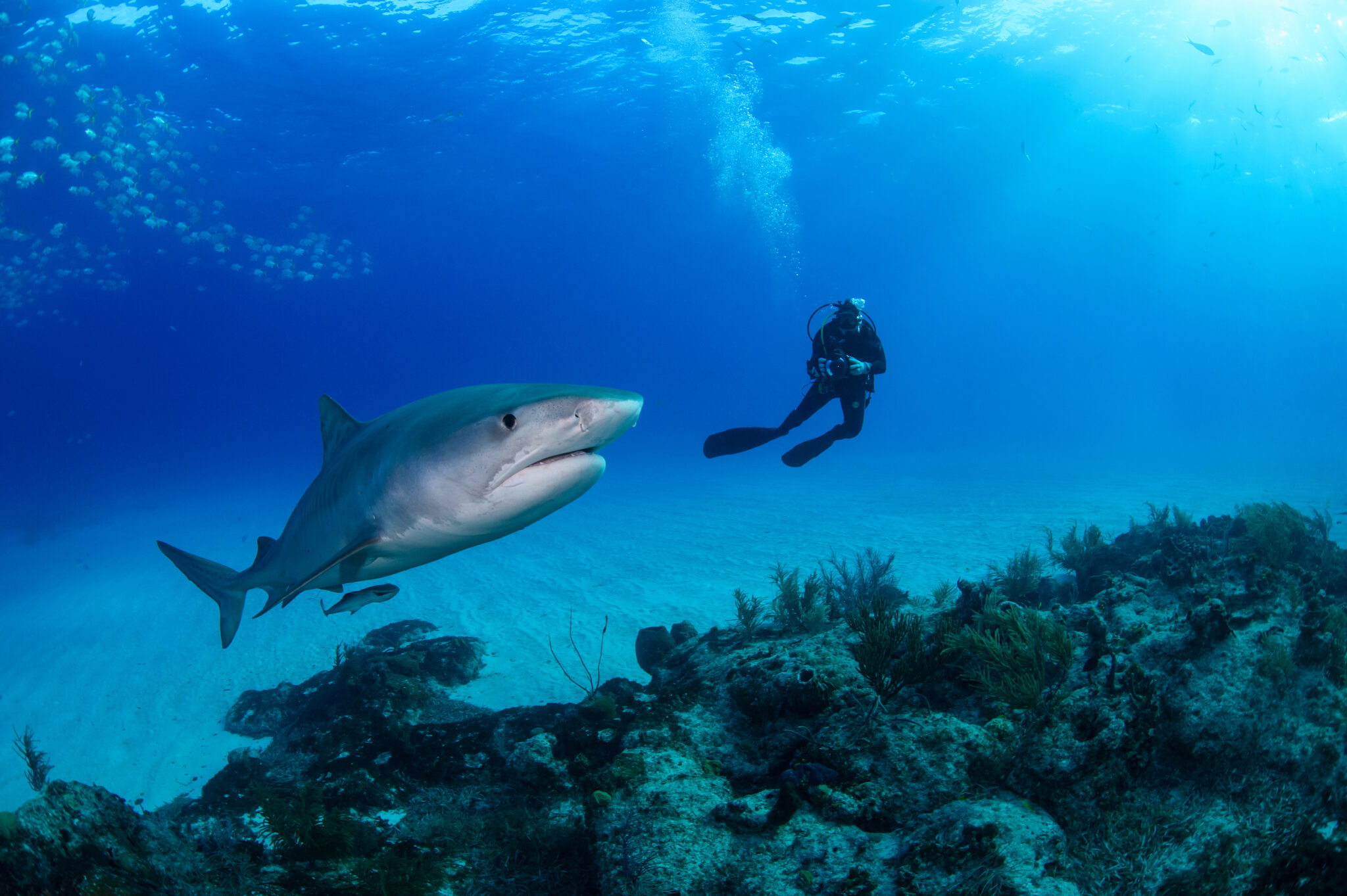
4. The Bahamas
Or, head to the Caribbean, where the Bahamas plays hosts to some of the most spectacular mega-fauna in the world. We love the trifecta… Bimini, Grand Bahamas and Tiger Beach.
Plan a trip to Bimini to catch up with bull sharks, hammerhead sharks, friendly dolphin pods, and graceful schools of eagle rays. You’ll feel like you stepped back in time to an island still not heavily commercially developed and traversed by golf carts. Bimini can be explored by divers and snorkelers alike – and is absolutely stunning above and below the surface. Head to nearby Honeymoon Beach to swim with the local group of rays and don’t miss some of the wrecks sunk as artificial reefs which are always hosts to large schools of colorful fish.
Grand Bahamas offers a larger island vibe with incredible shark dives, gorgeous coral structures, turtles by the dozens and plenty of reef fish. It also features a freshwater cavern and cave system that is still being explored.
From Bimini or Grand Bahamas, you can head to the most spectacular tiger shark gatherings in the world. Tiger Beach offers the chance to take part in some of the greatest shark diving in the world. You’ll get up-close encounters with not only tiger sharks but lemon sharks, the occasional hammerhead and plenty of whitetip reef sharks in the crystal-clear azure waters that only an aquarium can top in terms of visibility.
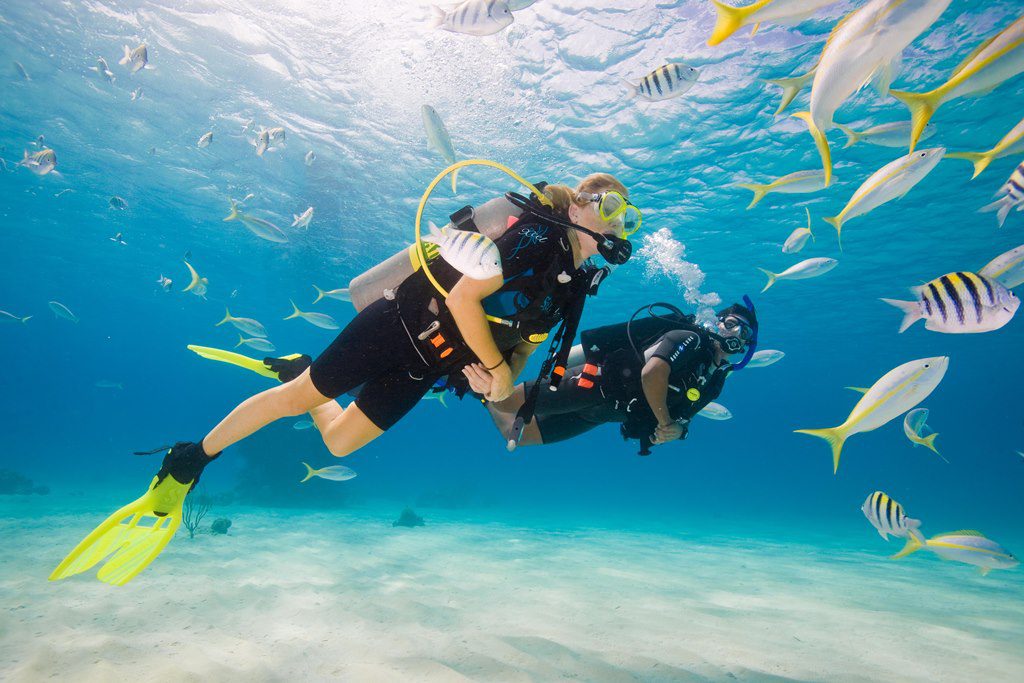
Making a Positive Impact
The Bahamas is a model in shark conservation, with incredible research coming out of the home of “shark week”. Like the fact that scientists discovered this summer at the Shark Lab that sharks form lifelong bonds and have complex social structures – they are literally the opposite of mindless predators! In addition, the Bahamas have created the first shark sanctuary in the Atlantic Ocean in 2011, with over 40 shark species now residing in the 630,000km of protected area. This has ultimately helped shark tourism in the Bahamas contribute to $100 million in the economy every year – and has also kept their conch and lobster industries flourishing thanks to a healthy ecosystem full of apex predators. Why not meet some toothy new friends in the shark diving capital of the world while contributing your tourism dollars to a country that is a leader in marine conservation? Your Bahamas diving experience can be booked with 19 PADI Dive Centres.
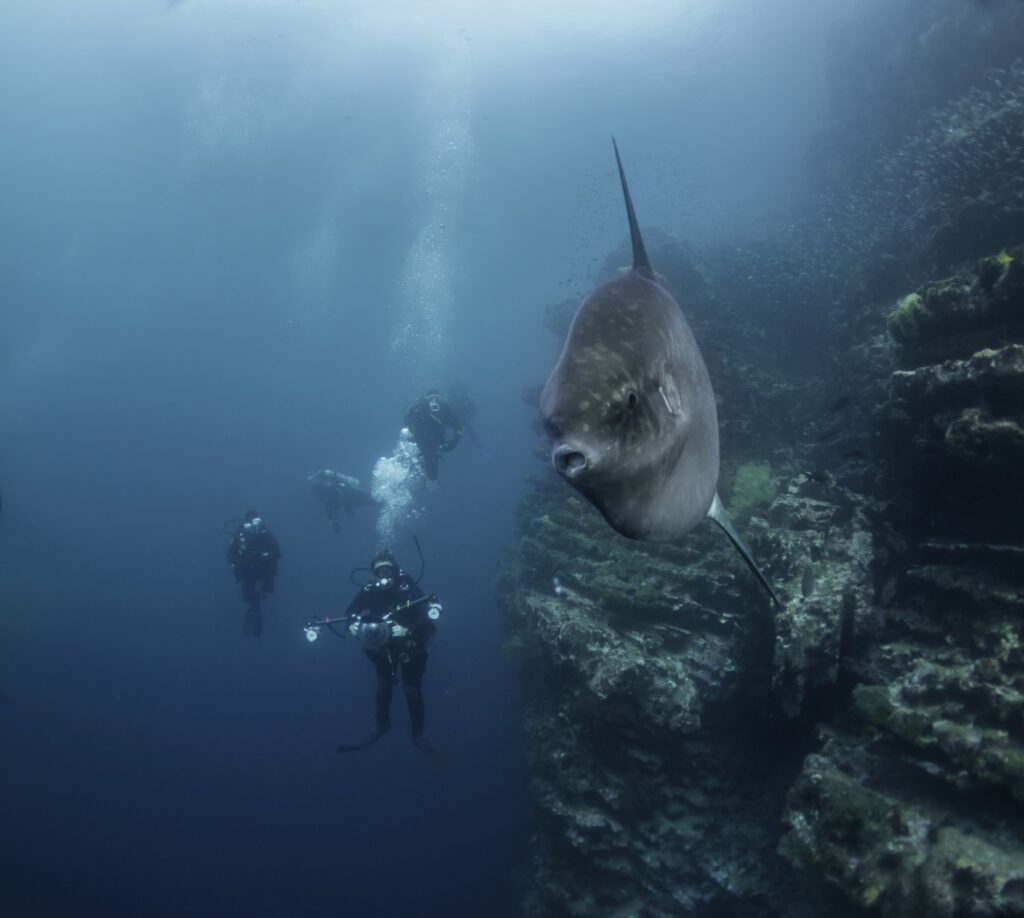
5. Galapagos Islands, Ecuador
The Galapagos Islands, a naturalist’s dream destination, are found over 600 miles (1,000 kilometers) off the west coast of Ecuador. Despite easy access by plane, the Galapagos are a wild wonderland, full of endemic species both above and below the water. Marine iguanas, Galapagos penguins, sea lions and Galapagos sharks along with schooling hammerheads, whale sharks, manta rays and mola mola are the delight of scuba divers.
While diving in the Galapagos off the coast of Ecuador is fantastic all year long, May offers a unique opportunity to truly see it all. This is because May brings calmer, warmer and more clear waters to this world-famous dive site. As a result, the Galapagos–which is one of the most protected places on Earth–is teeming with large schools of hammerhead sharks and manta rays, in addition to sea horses, turtles, penguins, sea lions and marine iguanas. Where else can you dive with a dinosaur?
Dive sites in the Galapagos tend to be volcanic in nature with a few corals scattered here and there. Channels around the islands boast heavy currents which work like pelagic highways. Because the best dive sites in the Galapagos are distant (as is the case of Wolf and Darwin Islands) or spread out, joining a liveaboard is the best way to fully experience the archipelago.
There is literally no place more spectacular underwater than remote Darwin and Wolf islands in the Galapagos. And you can only reach them on a boat. On the far outer reaches of the archipelago, Darwin Island and its famous dive site, Darwin’s Arch, are the highlight of any liveaboard tour in the Galapagos. Manta rays, sea turtles, dolphins, eagle rays and the occasional whale shark wow divers with their presence. The real showstopper are the huge number of sharks brought in by the strong current. You’re likely see schools of hammerheads, silky sharks, blacktip sharks and Galapagos sharks.
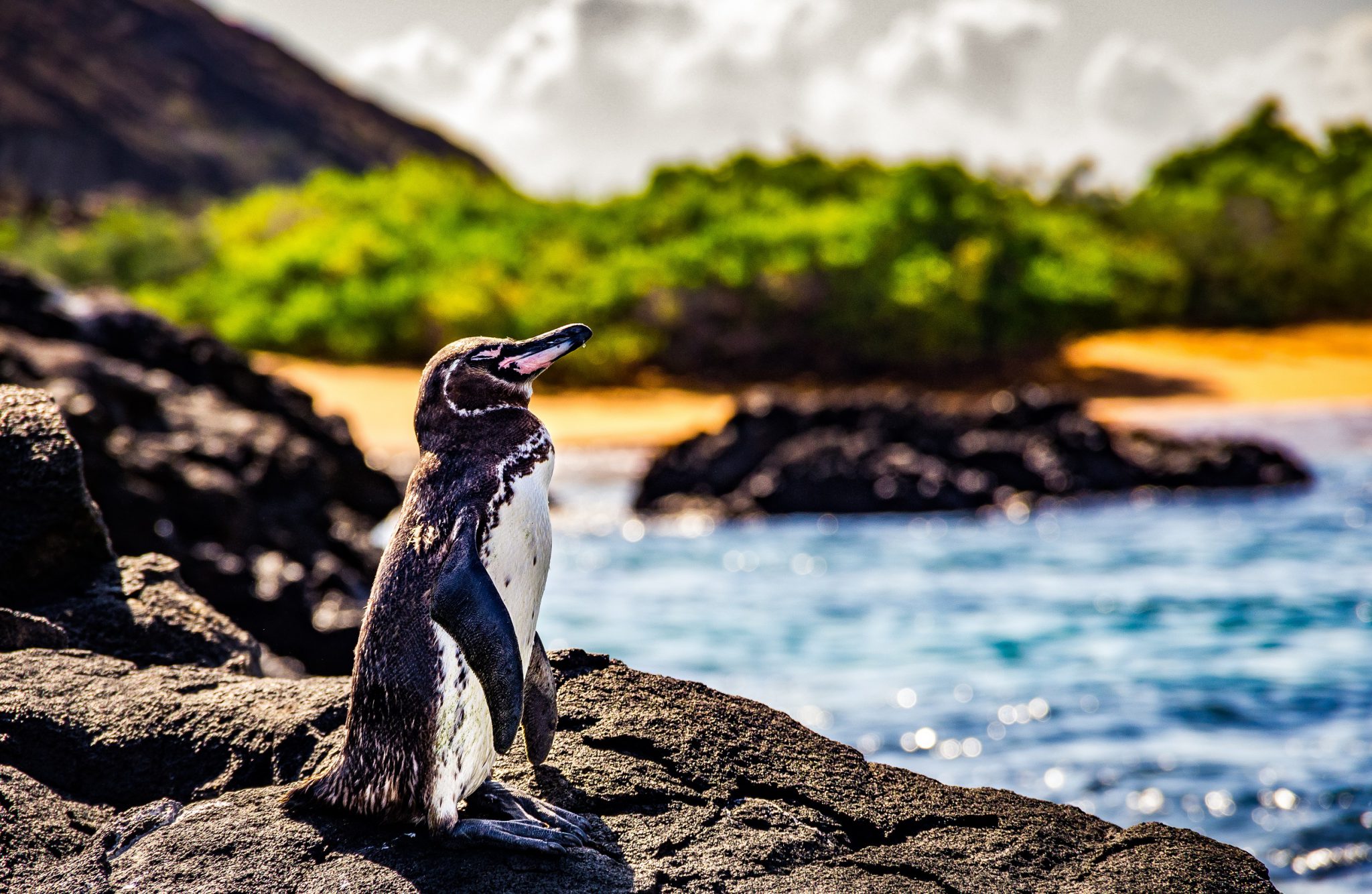
Making a Positive Impact
The Ecuadorian government has just established over 60,000+ kilometers of new marine reserves in the Galapagos. Plus, four Latin American countries have come together to ban all industrial fishing between Mapelo, Galapagos and Cocos – providing an additional 500,000 square kilometers of protected waters for the hammerhead sharks, turtles, tuna and manta rays that frequent these waters. A trip here in 2022 not only supports the country’s eco-tourism efforts, but further supports expanding the protection of this world heritage site. Your Galapagos diving experience can be booked with 5 PADI Dive Centres.
Ready to dive into these diving destinations where your tourism spending makes a difference to local conservation? Check out PADI Travel for the best dive holiday deals.
